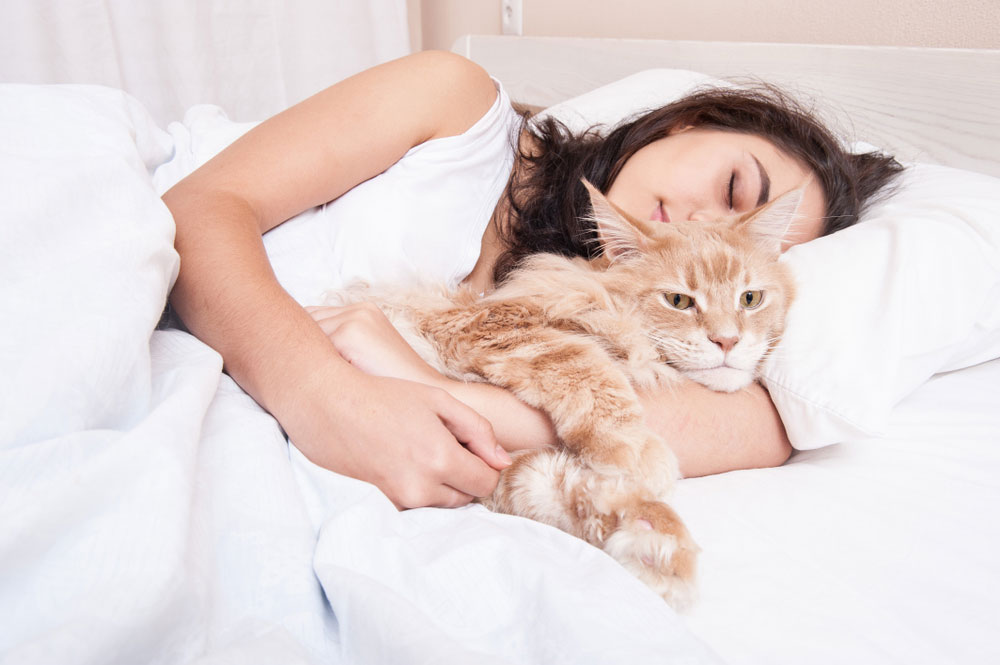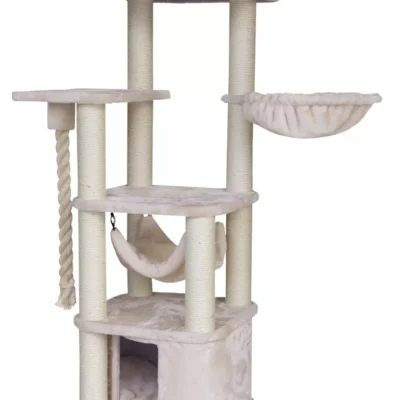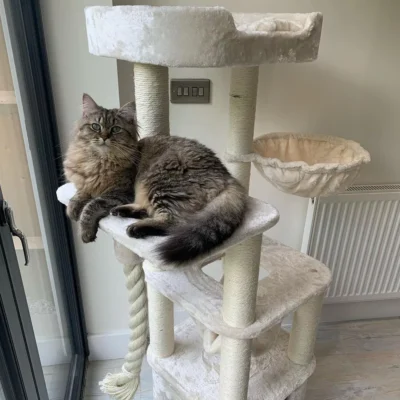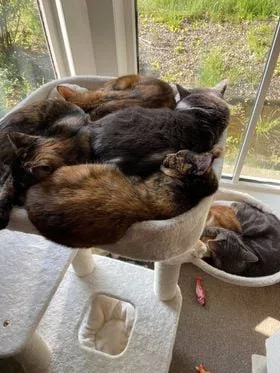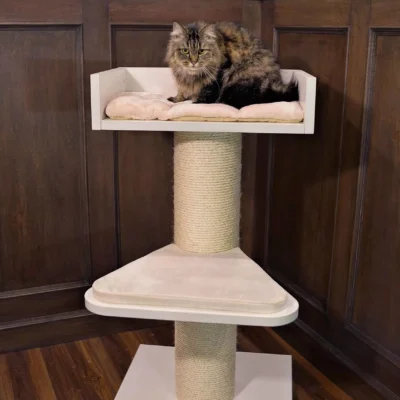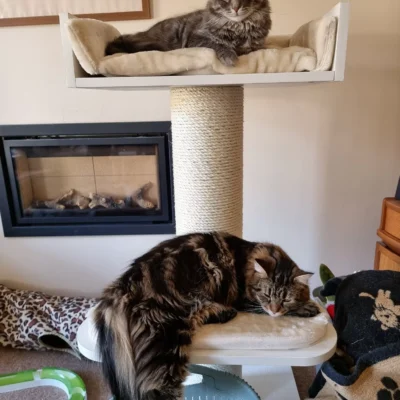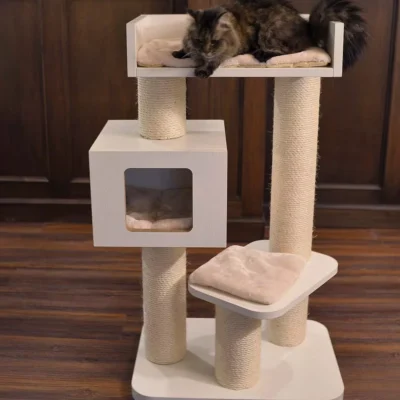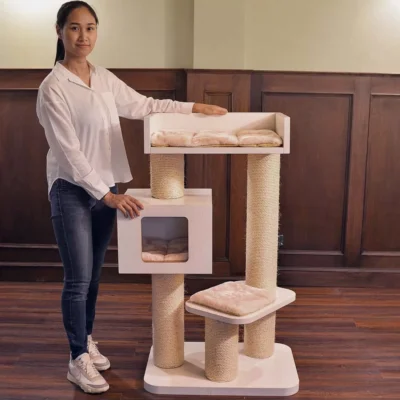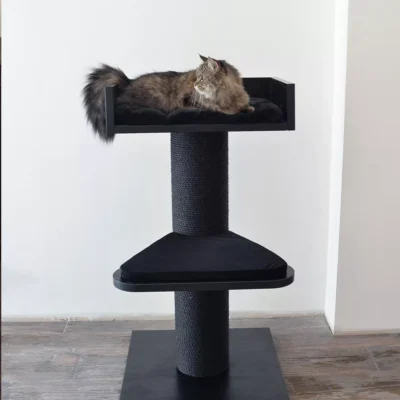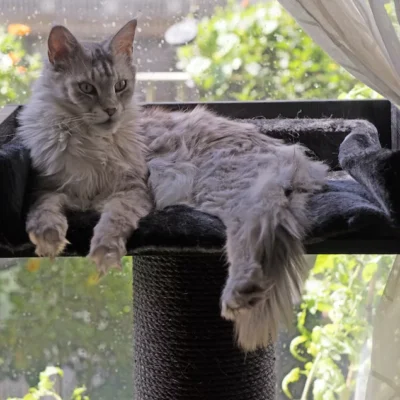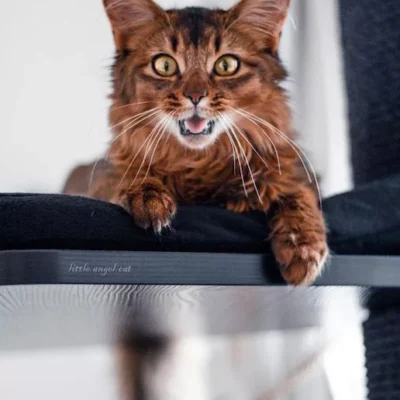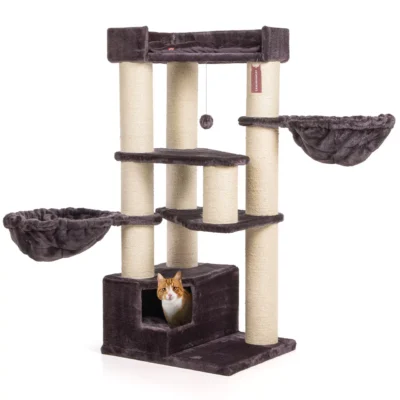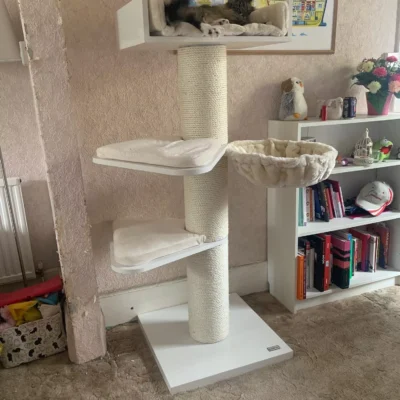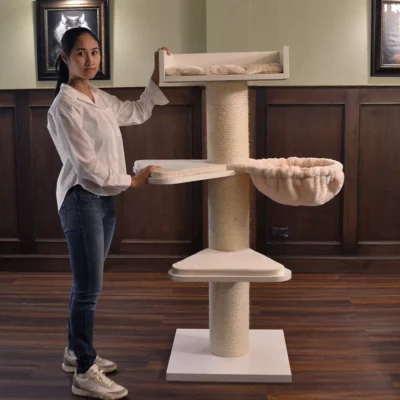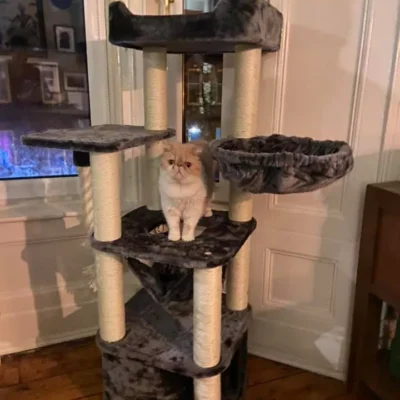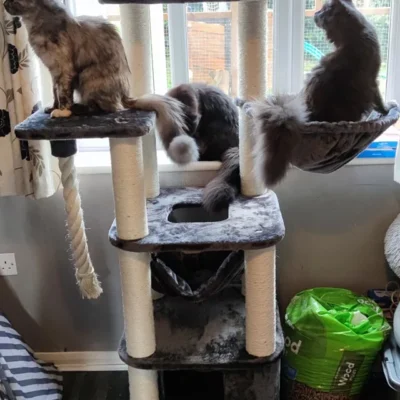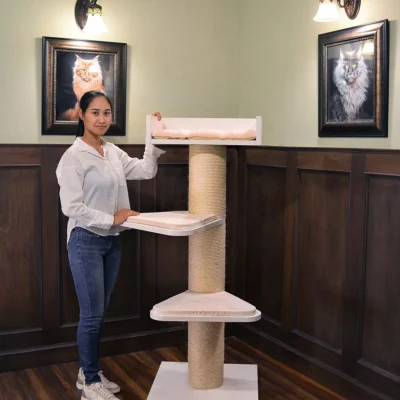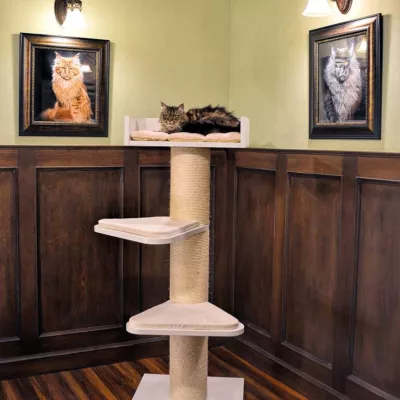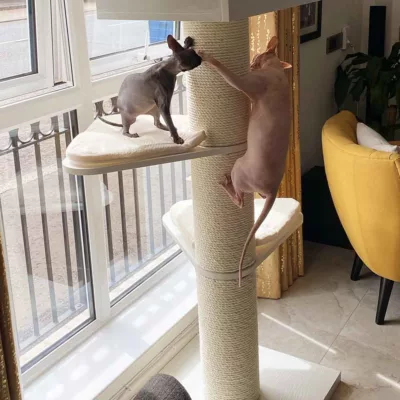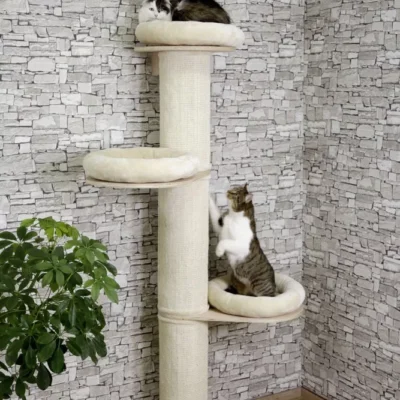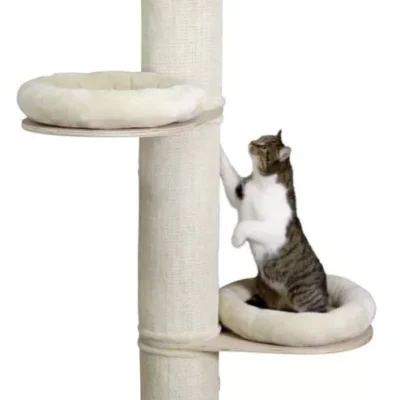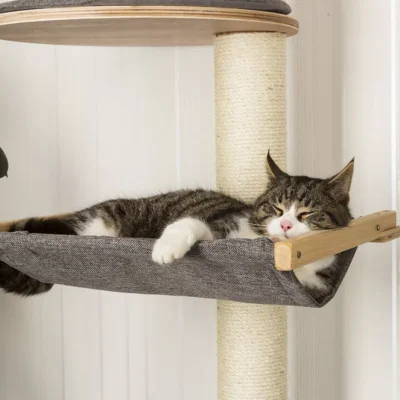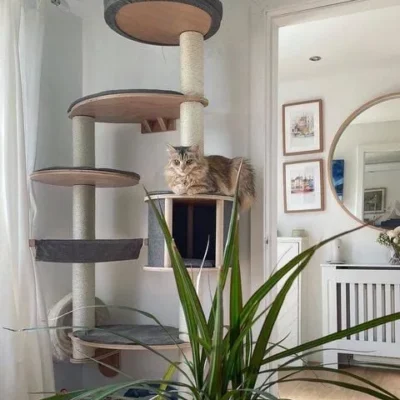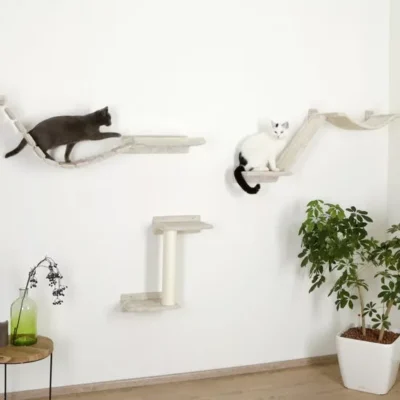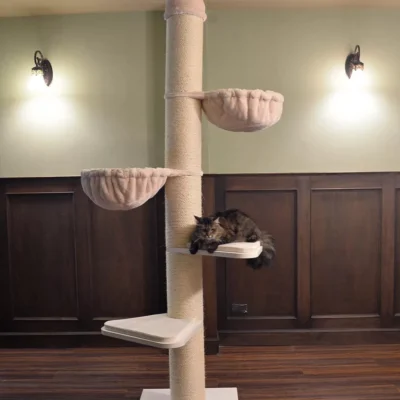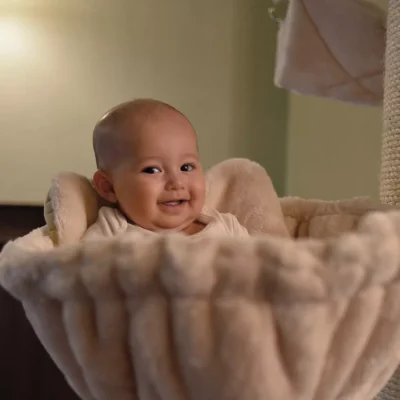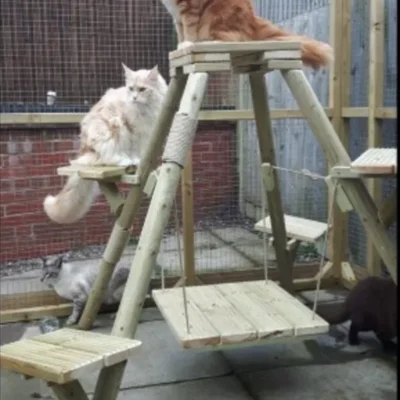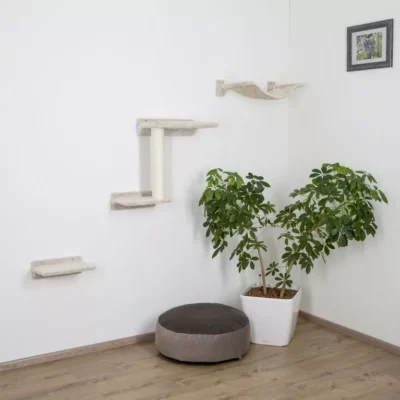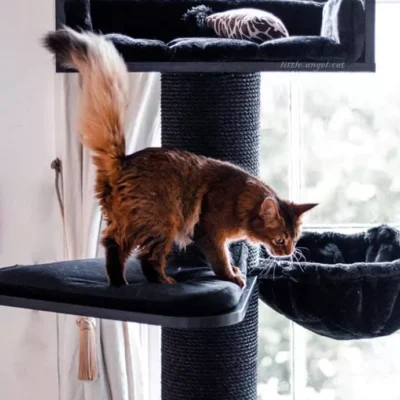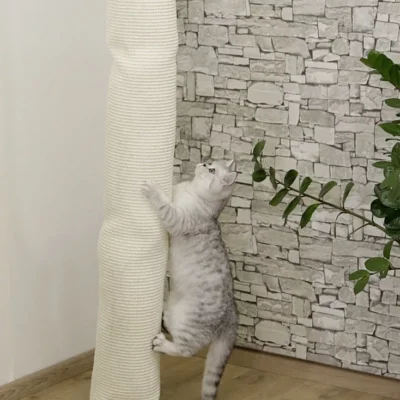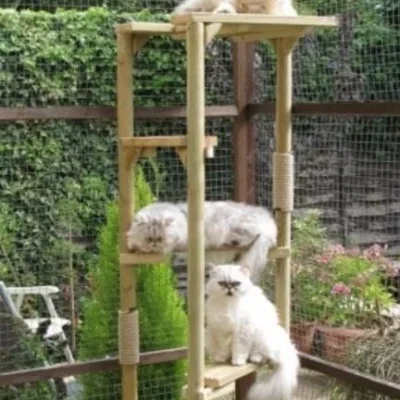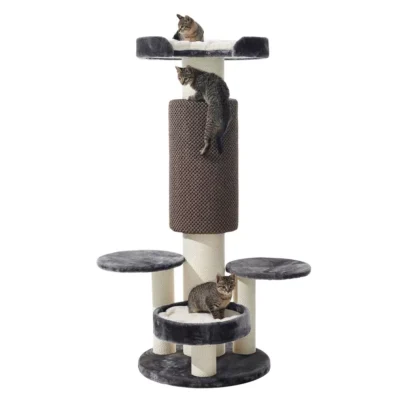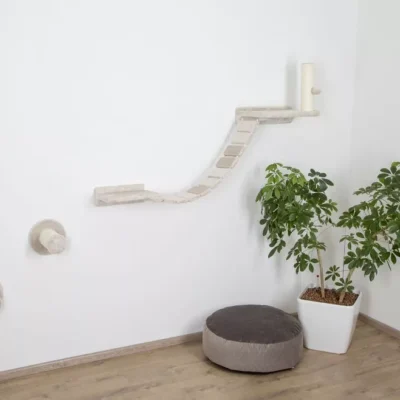0
Cats, creatures enigmatic in their ways and known for their distinct personalities, often display their affection through unique and quirky habits. One such heartwarming behavior is their tendency to choose their human companions as their preferred sleeping spots. This behavior, common among cat owners, fosters a unique and special bond between the cat and its human.
The familiar sight of a cat comfortably curled up on a lap, chest, or even draped over a shoulder, purring in contentment, is something many cat owners know and cherish. This act is more than just a search for a cozy nap spot; it signifies a deep sense of trust and affection from the cat towards its human.
Delving into the reasons why cats choose to sleep in such close proximity to their owners can deepen our understanding and appreciation of this special relationship.
Cats’ reasons for this behavior are as varied and intricate as their individual personalities. This exploration is an invitation to delve into the intriguing world of feline behavior, focusing specifically on why cats opt to sleep on their human companions.
The journey includes understanding the elements of trust, comfort, and warmth that cats seek, as well as deciphering the unique ways in which they communicate their affection and sense of security through this behavior.
Join us as we dive into understanding this charming and endearing behavior of cats choosing to nap on their owners. Through a blend of scientific insights and heartwarming stories, we aim to unravel the mysteries behind this behavior, thereby enriching the bond and mutual understanding between cats and their human families.
This exploration promises to offer a deeper insight into the affectionate world of felines, illuminating the reasons behind their choices and the profound bond they share with their human companions.
Evolutionary Instincts and the Quest for Warmth and Security
The behavior of cats seeking out their human companions for sleep is more than just a preference; it’s deeply rooted in their evolutionary instincts. To fully appreciate this behavior, it’s important to explore the evolutionary background of these enigmatic creatures and understand how the survival tactics of their wild ancestors have been passed down to modern domestic cats.
The forebears of today’s domestic cats were wildcats that adapted to survive in various challenging environments. A crucial aspect of their survival strategy involved finding safe, warm places for rest, crucial for energy conservation.
This instinctual drive for warmth and security, honed over generations, remains ingrained in the behavior of our domesticated feline friends.
Cats have a higher body temperature compared to humans and naturally gravitate towards warmer environments. The body heat emanating from humans provides an ideal, cozy sleeping environment for cats, especially in cooler climates or during colder seasons.
Beyond the quest for warmth, sleeping is a vulnerable time for cats in the wild. By choosing to sleep with or on their owners, domestic cats are expressing a deep level of trust and seeking a secure environment. This behavior mirrors the instincts of their wild ancestors, who would have sought safety in numbers or secure locations while resting.
Cuddling up with their humans allows cats to conserve energy more efficiently. The warmth from a human body means the cat doesn’t have to work as hard to maintain its body temperature, leading to more restful and rejuvenating sleep.
Furthermore, this behavior also acts as a powerful bonding mechanism. In the wild, cats that were part of a group would sleep together for warmth and security, reinforcing their social bonds.
When a domestic cat chooses to sleep on its owner, it reflects a similar expression of trust and familial bonding, akin to the dynamics within a social group in the wild.
In summary, the simple yet profound act of a cat choosing to nap on their human is a behavior steeped in evolutionary instincts for warmth, security, and social connection.
This chapter sheds light on the ancestral behaviors that continue to influence the charming habits of our domestic cats. The next chapter will delve deeper into the emotional and psychological facets of this behavior, exploring its impact on the human-feline bond.
Bonding and Attachment – The Emotional Tapestry of Cat-Human Relationships
The act of cats sleeping on or close to their owners transcends mere physical comfort; it’s a phenomenon deeply interwoven with the emotional bond that exists between the cat and its human. This chapter delves into the complexities of this bond, exploring how the seemingly simple act of sharing sleep can significantly fortify this unique relationship.
At the heart of a cat’s decision to sleep on a human lies a profound sense of security. For cats, which are at their most vulnerable during sleep, choosing a human as their resting place is a substantial gesture of trust. This behavior signals that the cat feels safe and protected in the presence of their owner.
Similarly, just as humans derive comfort from the company of loved ones, cats too find emotional solace in the closeness of their owners. This proximity can be exceptionally soothing, offering them a tranquil sense of calm and contentment.
Moreover, each occurrence where a cat opts to sleep on their owner serves to reinforce this trust. With every such instance, the cat’s assurance in their human as a secure and comforting presence in their life is strengthened.
Cats communicate and bond in part through scent marking. Equipped with scent glands located on their cheeks, paws, and flanks, cats mark their territory and express affection by rubbing against or sleeping on their owners.
This act of scent marking is a way of claiming their human and fortifying the bond. For cats, scent is a crucial aspect of recognition and familiarity. By becoming accustomed to their owner’s scent, they deepen the sense of connection and comfort.
This exchange of scents is not merely about possession but about creating a shared ‘group scent’ that fosters a familial bond, making the cat feel like an integral part of the family unit. Additionally, scent marking serves as a form of communication. It is a way for cats to convey feelings of affection and belonging, enriching the emotional connection both ways.
In conclusion, the behavior of a cat sleeping on its owner embodies a complex interplay of emotions and trust, serving as a cornerstone in the development of a deep and meaningful bond. This act is not only comforting for the cat but also emotionally enriching for the human, fostering a relationship that is mutually beneficial and emotionally fulfilling. The following chapter will delve into the health benefits that both cats and their owners experience as a result of such close and affectionate relationships.
Seeking Safety and Protection – The Instinctual Drive in Cats
Cats, like many animals, possess a deep-rooted instinct to seek safety, particularly in vulnerable states such as during sleep. This chapter aims to delve into this innate need for security that significantly influences feline behavior, especially their tendency to sleep alongside or on their human companions.
A cat’s human companion often symbolizes the ultimate sanctuary, a source of safety and security that can be hard to find elsewhere. This sense of protection is heightened in unfamiliar or stressful settings where the cat may feel more vulnerable.
Cats, being creatures of habit, find solace in routine and familiar environments. Consequently, sleeping with their owner becomes a comforting ritual, providing a consistent and reassuring presence that reinforces their sense of safety.
As the bond between a cat and its human deepens over time, this trust matures, leading the cat to perceive their human as a guardian. This evolving bond is vital for the cat to feel relaxed enough to engage in deep sleep.
Cats are naturally alert and sensitive to potential dangers, a trait that remains active even in the safety of a domestic setting. In a household, cats often look to their humans for cues on the safety of their environment.
A relaxed and calm owner usually signifies to the cat that it’s safe to let down their guard. This dependence on humans for safety cues reflects a profound level of trust and connection.
Interestingly, this protective relationship can be reciprocal. Many cat owners are intuitively responsive to their pet’s needs, often creating a living space that is secure and comforting for the cat. Moreover, cats are attuned to the emotional and physical states of their owners.
They may choose to sleep close to them as a means of providing comfort or in seeking solace when they sense stress, illness, or discomfort in their human.
In conclusion, a cat’s decision to sleep with their human is deeply intertwined with their instinctual search for safety and protection. This behavior is rooted in the cat’s inherent need for a secure environment and their trust in their human companion to provide that sense of safety. The next chapter will address practical considerations for cat owners, focusing on how to create and maintain a safe and comfortable home environment for their feline friends.
Health Benefits for Cats and Owners – The Mutual Advantages of Co-Sleeping
The act of cats sleeping with their human companions is more than just an endearing habit; it’s a practice rich in mutual health benefits. This chapter delves into how this shared experience positively influences both cats and their human companions, fostering improvements in their physical, mental, and emotional health.
The proximity to their humans during sleep can have a profoundly calming effect on cats. The steady rhythm of a human’s breathing and heartbeat acts as a natural soothes, helping to diminish stress and anxiety levels in felines.
When cats feel secure and at ease, they tend to experience deeper, more restful sleep, which is essential for their overall health. It positively impacts their immune system and cognitive functions.
Moreover, cats that are less stressed and more content are likely to exhibit fewer behavioral problems, such as inappropriate scratching, aggression, or issues with litter box usage.
For cat owners, sharing a sleeping space with their feline friend can significantly strengthen the emotional bond between them. This closeness is particularly beneficial for individuals living alone or those coping with emotional challenges.
The presence of a cat can be a potent stress reliever for humans. The simple acts of petting a cat and listening to its purring are known to lower stress levels and blood pressure, fostering a sense of tranquility and well-being.
Additionally, interactions with cats, including co-sleeping, have been associated with reduced symptoms of depression and anxiety, offering substantial emotional support and boosting overall mental health. Some owners also find that having a cat nearby during the night provides a comforting sense of security, which can lead to improved sleep quality.
The therapeutic potential of a cat’s purring should not be overlooked. The specific frequency at which cats purr has been suggested to possess healing properties, potentially aiding in the healing of bones and muscles. This aspect of a cat’s physiology adds another layer to the health benefits of co-sleeping.
In summary, the practice of cats sleeping with their owners is a shared experience that yields a multitude of health benefits. It contributes to reduced stress and anxiety in cats, which can prevent various health and behavioral issues, while simultaneously offering significant mental and emotional health advantages to the owners.
This chapter highlights the deep and mutually beneficial relationship between cats and their human companions, a bond that extends far beyond simple cohabitation to encompass a shared path of emotional and physical wellness.
Creating the Ideal Sleeping Environment – Tailoring Comfort and Safety for Your Cat
Ensuring your cat has a comfortable and safe sleeping environment is essential for their well-being. This chapter provides practical advice for cat owners on how to create a sleep space that meets their cat’s preferences and needs, focusing on safety, comfort, and the cat’s individual habits.
The choice of a cat bed is crucial and should be tailored to your cat’s size and sleeping preferences. Some cats favor open beds for easy access, while others prefer enclosed spaces for added security. The bed should be soft, warm, and provide good support.
When positioning the cat bed, find a quiet, low-traffic area where your cat feels secure. Many cats enjoy a spot with a view, such as near a window, but it should also be sheltered from drafts and away from their food or litter box. Soft blankets or cushions can enhance the comfort of your cat’s bed.
Catering to your cat’s unique preferences, whether they like burrowing in blankets or lounging on top, is important. Consider creating multiple cozy spots throughout the house to suit their varying preferences throughout the day, such as sunny spots for daytime naps and warmer areas for nighttime.
Maintaining an appropriate temperature in the sleeping area is important. Cats generally prefer warmer places but should have the option to move to a cooler spot if needed.
Cats are independent by nature, and their choice of sleeping location should be respected.
If your cat chooses to sleep with you, it reflects their trust and affection. Make sure the arrangement is comfortable for both of you, perhaps by using a larger blanket to ensure enough space. However, be mindful that cats can sometimes disrupt human sleep patterns, especially since they are often active at night. If this becomes an issue, gently encourage your cat to sleep in their own bed.
Additionally, practice safe co-sleeping habits, especially with young kittens or older cats. Ensure there are no small objects or loose strings in the bed that could be hazardous, and be mindful of the cat’s ability to safely get on and off the bed.
In summary, crafting the ideal sleeping environment for your cat involves considering their comfort, safety, and individual preferences. Whether they sleep in a specially chosen bed or beside you, providing a secure and cozy place for your cat to rest is an important aspect of their health and happiness. The next chapter will focus on balancing your cat’s need for independence with their desire for affection and closeness, ensuring a harmonious coexistence between cat and owner.
Conclusion: Cherishing the Purr-fect Moments of Closeness – Embracing the Whys of Feline Snoozing Choices
As we reach the end of our exploration into the reasons behind cats’ preference for sleeping on their owners, it becomes evident that this behavior transcends the mere search for a comfortable resting place. It is a complex tapestry woven from instinct, trust, and deep affection.
We’ve uncovered that cats, guided by their innate evolutionary instincts for safety and warmth, seek solace and comfort in the presence of their human companions. This behavior, deeply anchored in their ancestral roots, is a powerful indicator of the profound bond they share with their owners.
The joint experience of feline-human closeness offers significant emotional and physical benefits for both parties. For cats, snuggling with their human counterparts provides a haven of security, warmth, and comfort, contributing to their mental and physical health. For humans, these intimate moments offer stress relief, lower blood pressure, and emotional support, thereby enhancing overall mental well-being.
As cat owners, recognizing and valuing these moments of closeness and comfort is crucial. Each instance when a cat opts to curl up in our laps or nestle beside us is an expression of their trust and affection. It serves as a beautiful reminder of the special and unique bond we share with our feline companions.
These serene moments of togetherness, filled with purring and affection, provide not just a refuge of safety and warmth for our cats but also enrich our lives with their presence. Amidst the hustle and bustle of everyday life, these precious moments of connection with our cats are invaluable, offering comfort, joy, and a deep sense of companionship.
In summary, the behavior of cats choosing to sleep on their owners encapsulates the essence of the cat-human relationship. It symbolizes a relationship steeped in love, trust, and mutual benefit. As cat enthusiasts and caretakers, let us continue to create nurturing and safe environments for our feline friends, treasuring every moment of closeness and comfort they choose to share with us.

